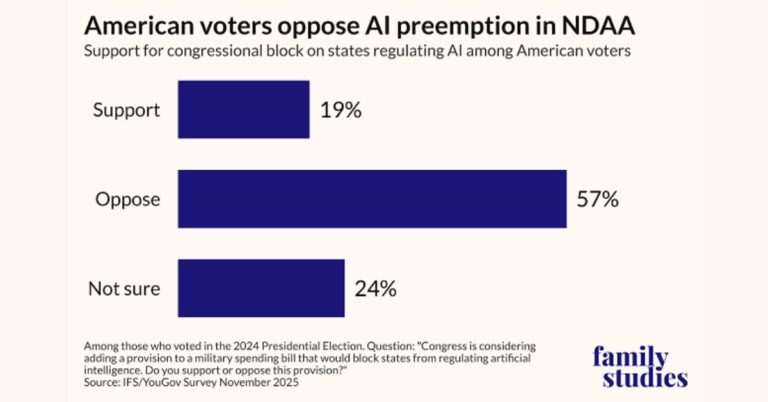For years, the telco world has been talking about the disruption and opportunity that a new breed of cloud-native 5G services will bring. We know by now that lightning-fast speeds, flexibility, bandwidth, customer experience and myriad new revenue streams are all coming. However, sometimes it takes one lightbulb moment to shift industry perspectives into a different gear.
In 2023, that moment came with the news that Amazon is offering mobile connectivity for $25 per month as part of its Prime membership packages thanks to a new partnership with mobile virtual network operator (MVNO) Dish. Amazon might not be directly offering its own branded mobile service, but bundling a mobile offering with Prime will make membership even more enticing for new and existing members.
Why is that important? Today, customer expectations around mobile services are higher than ever. Customers aren’t just hungry for data-heavy products and services. They are also looking for quality digital experiences that offer value and convenience.
In these areas, Amazon has excelled in recent years, bundling services such as Prime Video with next-day delivery of Amazon Marketplace products to retain customers and continue differentiating their offerings. The commerce giant’s push into mobile services has further highlighted the critical role that MVNOs can play in helping businesses monetize 5G and increase the value of their offerings.
MVNOs are mainly free from the constraints of traditional telcos, and while many may lease network infrastructure from big telco players, their own agility and flexibility is a unique advantage. They can target particular demographics and offer service packages highly tailored to individual business needs — such as the needs of Amazon customers.
Convenience Keeps Its Crown: MVNO Agility
MVNOs, so-called because they don’t own the underlying infrastructure on which they base their services, are in a prime position to disrupt the old telco order. They buy in bulk from traditional network operators and offer their customers keen pricing and savvy deals targeted at their personal preferences and needs.
Amazon’s entry into the market signals a step-change in what constitutes a good deal. Brands that offer differentiation not only on price but by grouping other benefits aren’t just more likely to gain more customers; they’re also less likely to lose them to churn.
The shift to bundled services is a win-win for customers, whose loyalty is rewarded with further deals and convenient, unified billing, and for MVNOs and their partner telcos, who get to upsell and cross-sell services. Amazon is perhaps the biggest player to make this move, but it’s a movement that’s been gaining traction for some time.
The Rise of Bundled Services: A Growing Trend in Telecom
Since MVNOs first started offering wireless network services, we’ve seen innovative offers and prices come from non-telecom brands. Think Cricket Wireless (US) and Salam Mobile (Saudi Arabia) as forward-thinking MVNOs and businesses such as ALDIMobile (Australia) or Asda Mobile (UK), which have successfully leveraged their brand presence and customer base in food retail to break into mobile services.
MVNOs are pushing these boundaries even further, using ultra-convenient onboarding, unified billing and bundling several services together to appeal to customers. For example, Nova Energy in New Zealand offers mobile services bundled with their utilities, giving customers a good deal and one less bill to worry about at the end of the month. Or take Tesco Mobile in the UK, where mobile subscribers also earn loyalty points that they can use for grocery shopping.
All of this is made possible thanks to the ability of MVNOs to offer tailored, differentiated services to the market faster than traditional MNOs. They can also pivot and adapt to changing market conditions and new opportunities with greater speed and less risk. For example, Salam Mobile in Saudi Arabia prioritizes fully personalized packages that meet individual customer needs, resulting in a higher average revenue per user (ARPU). Guinea Mobile in Peru launched its MVNO service in just four weeks and has accelerated and streamlined new customer onboarding down to four hours, from placing the order to SIM delivery. Such seamless onboarding would have been unheard of before the rise of MVNOs.
Amazon is no stranger when it comes to bundling services to create a loyal customer base. Adding a mobile service to its offering was perhaps only a matter of time, making it even harder for Prime members to consider leaving it. An easy sign-up process and a smooth customer experience are key to making this work, and that’s where MVNOs like Dish tend to shine.
The Power of Partnership: MVNOs and Cloud Integration
Traditionally, in telecom, providers bundled services at scale through partner onboarding. Typically, this involved a telco partnering with a streaming service or a handset manufacturer to create a more appealing offer to subscribers. With modern cloud-native MVNO-enabling (MVNE) platforms, services can be launched in weeks rather than months or years.
Using automation and self-service capabilities, so-called “zero-touch” partner onboarding has already radically simplified and sped up the onboarding process. Zero-touch refers to the automated process of integrating new partners or resellers into the network, eliminating manual intervention and reducing time-to-market.
Zero-touch onboarding is valuable when discussing integrating one partner offering with another. Still, it has become critical with 5G and its seemingly limitless use cases and revenue opportunities. Given 5G’s potential to monetize advanced technologies such as M2M communication, IoT, AR/VR, GenAI, robotics and so on, traditional telco providers would need to partner with many different service providers to realize these opportunities and scale their services slowly. Meanwhile, MVNOs can focus more on selecting partners that suit their needs and business goals.
How a back-office system grew to be front and center of the modern MVNO
These partnerships have proved pivotal in unleashing the wave of personalized offerings, flexible plans and seamless billing experiences. On the face of it, consumer demand for value and connectivity has driven this growth in personalized bundles, but it would not have been possible without a radical shift in the underlying infrastructure, the business support system (BSS).
MVNOs traditionally adopted the legacy BSS systems of their telco operator, which worked well enough as a way of managing charging and billing in the past. However, these legacy systems struggled to scale up to the demands of modern offerings that change with market conditions and customer demand. MVNOs now increasingly choose software-based and cloud-based BSS platforms that enable them to launch services swiftly, integrate with other third-party services seamlessly, and offer a range of billing options for a better customer experience, especially with the new power of GenAI.
This last factor — how customers perceive service bundles — is perhaps the most important. Mobile usage patterns are shifting, giving rise to the “always-on” mobile user, a segment that has doubled in three years, best characterized as expecting constant connectivity and often relying on that connectivity for their livelihoods. This group demands high levels of customer satisfaction and is unafraid to churn if they don’t receive it – and that group is growing.
According to one source, almost a third (31%) of CEOs now deem service bundles essential for retaining customers. Nearly 70% think tailoring offers to meet the needs of specific audience segments is important. For retailers, becoming an MVNO or leveraging the services of an MVNO, as Amazon has done with Dish, is an excellent way of creating more “sticky” service bundles.
Launching MVNO Services: How To Get Started
Retailers looking to break into the mobile market have options. Either they can partner with an MVNO to tailor a service suited to their audience and the style of service bundle they want to offer, or they can take the leap and become an MVNO themselves. In either case — but particularly the latter — software-based BSS platforms will be integral to rolling out services at speed and scale.
These platforms support the agility MVNOs require while streamlining the charging and billing process and helping deliver better customer experience. Software BSS is already helping to fuel the growth of the MVNO market, valued at $70.3 billion in 2022 and projected to reach $147.7 billion by 2032. We’re seeing the fastest growth emerging in Asia, with Japan and China leading the way and many others in the Asia Pacific region following suit, harnessing cloud-enabled and GenAI technologies to deliver personalized bundles.
However, while cloud-enabled MVNO service launches are on the rise, many service operators still use legacy BSS systems. These monolithic platforms hamper growth potential since they are ill-suited to launch new or scale existing services. Most importantly, legacy BSS platforms define speed in months and years, while the contemporary market players expect weeks and sometimes even days. If the rise of the modern MVNO — perfectly exemplified by Amazon entering the mobile market — has taught us anything, it is about the importance of being able to deliver appealing bundled services seamlessly, rapidly and at scale.
If retailers that prioritize customer experience and convenience want to keep these values in place as they make their foray into the world of MVNOs, they will need to adopt cloud-based BSS infrastructure that can deliver integration with analytics and machine learning, powering GenAI to deliver personalized packages and rapid time-to-market.








































